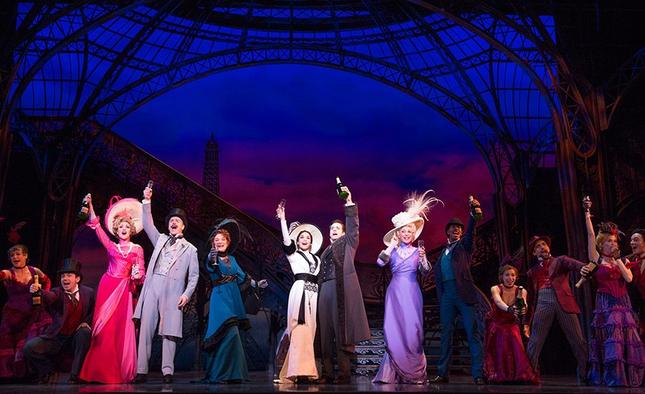‘Gigi’ Looks Ready to Leap From Kennedy Center to Broadway
By • February 5, 2015 0 1616

“Gigi” is back, but then again she’s not.
Whether this new (it has a new book by screenwriter Heidi Thomas) version of an old movie musical which became a Broadway show will become a Broadway hit depends a lot on the kind of audiences it gets, and how those audiences respond.
“Gigi” now in a pre-Broadway tryout run at the Kennedy Center’s Eisenhower Theater through Feb. 12, is markedly different from the movie—a 1958 all-star MGM musical, directed by VIncente Minnelli—or a 1970s staging which did not do all that well.
Few people may remember the stage production—something of a first in its time since it was a Broadway show based on a movie musical, instead of vice versa. But the Lerner & Lowe musical already had its critics—it was considered by some to be “My Fair Lady” light, and indeed, the similarity remains, in the staging and in the music.
“Gigi” is framed in references to other shows—the movie, the play, “My Fair Lady,” even the recent from the ground-up Kennedy Center musical, “Tiny Dancer,” which was also set in Paris during La Belle Epoch at the end of the 19th century.
As it stands, this “Gigi” delivers on the entertainment—the familiar songs are sung with knowing passion, the sets and costumes are outstanding, and Signature Theatre’s artistic director Eric Schaeffer frames this version in a welcome, if not surprising, melodrama.
The producers have cast Vanessa Hudgens—a graduate of Disney Studios “High School Musical”—in the starring role, obviously with an eye to appealing to a younger, contemporary audience. Hudgens—small, dark-haired, nimble, energetic and appealing—handles the role with enthusiasm. She’s that high-strung young adolescent who carries authenticity around as if it were part of her quaint school uniform.
The original film—based on a short novel by the famed French writer Colette—featured a cast of mostly French stars—the luminous Leslie Caron as Gigi, the suave Louis Jordan playing the older debonair swain and the indefatigable Maurice Chevalier as an aging roué.
In this production, Gigi has become a little older—18 —and the object of her affections, Gaston, has become a little younger, so the January-to-December aspects of the original romance become more like an August-October affair.
This—and having Gigi’s aunt and grandmother sing the infamous “Thank Heaven for Little Girls” song—sung by Chevalier with twinkling eyes in the film—provides a more-or-less acceptable gloss on the show’s story, which is about training Gigi to become a mistress to a wealthy, older man. This version—with Hudgens standing up for herself and true love—might go down a lot easier for a modern audience whose members are still looking for love in all the wrong chat rooms.
The show is all about 19th-century Paris—with the new Eiffel Tower, the world’s fair, Maxim’s, men in top hats and women in fantastic gowns, kept girls flashing diamonds—as a kind of theme park of French mores and fashion.
In the film, Minnelli—always a great visual stylist—gave everything a sophisticated sheen, sort of like a big-budget foreign movie and Leslie Caron had the kind of incandescence which is hard to transport to the stage. The sheen remains, but the sophistication is lagging, for which we can actually be grateful.
For this production, Howard McGillin is the roguish roué Honore Lachaille, with the kind of affability that suggests that roués are full of rue. Gigi’s protectors—Mamita, played with strong-voiced warmth by Victoria Clark, and Aunt Alicia, played with alarming and beguiling cynicism by Dee Hoty—command the stage when they’re on, while Corey Cott , strong voiced and handsome, plays what amounts to the perfect boyfriend—Gaston LaChaille, inventor, zillionaire, lover, celebrity, sort of a younger, single George Clooney of the boulevard.
“Gigi” is more than adequately entertaining. It’s like the best sort of ice cream that goes down smoothly. It’s scheduled to open at the Neil Simon Theater in April. Bon chance.

